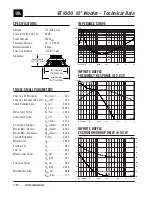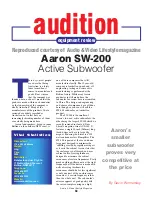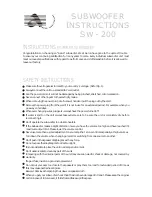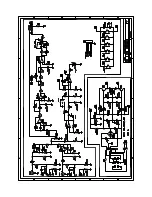
REL R-Series
Owner’s Manual
15
of the REL (using the HI/LO Level control) all the way down, and put the crossover
to 25 Hz. At this point, bring the REL’s volume back up slowly to the point where
you have achieved a subtle balance, i.e. the point at which you can hear the REL
even with the main speakers playing. Now, bring the crossover point up until it is
obviously too high; at this point bring it down to the appropriate lower setting. For
all intents and purposes, this is the correct crossover point. Once this stage has been
reached, subtle changes to volume and crossover can be accomplished to provide
the last bit of complete and seamless integration. With that, set-up is complete.
Hint: There may be a tendency to set the crossover point too high and the volume of the
Sub-Bass System too low when first learning how to integrate a REL with the system,
the fear being one of overwhelming the main speakers with bass. But in doing so, the
resulting set-up will be lacking in bass depth and dynamics. The proper crossover point
and volume setting will increase overall dynamics, allow for extended bass frequencies,
and improve soundstage properties. Note, volume must be adjusted in conjunction with
crossover changes. In general, when selecting a lower crossover point, more volume
may need to be applied.
Home Cinema Applications:
For Dolby Digital AC-3 or other 5.1 theatre systems, once
the standard set-up for two-channel outlined above is complete, the LFE output from the
processor or receiver should be connected to the .1/LFE INPUT and appropriate volume
adjustments made using the .1/LFE level control. For this configuration, you must set
the processor to the “large” or “full range” setting for the left and right speakers in order
for the REL to receive the bass signal via the high-level cable. In this configuration,
the REL provides support for both the left and right speakers for two-channel listening,
and support for the LFE when movies are playing. Most processors will allow you to
defeat the subwoofer output when listening in the two-channel mode. The effect of this
set-up is one of greatly increased dynamics in the mid-bass range, no bass bloat, and a
greater degree of space and timing from the special audio effects. For an even greater
sense of space and impact, a second REL connected in parallel to the centre channel will
prove to be a dramatic improvement as well. And if that is not enough fun, a rear REL,
both to support the rear channel speakers as well as to evenly distribute LFE through the
room, truly completes the full-range sonic picture for state-of-the-art film reproduction.
Running In
Care taken over running in will be rewarded by many years of pleasurable use. Both the
electronics and the drive unit will benefit from an initial period of carefully controlled use.
Possible damage may be sustained by running in the unit at too high a volume setting over
an extended period. On the other hand, by taking a little care over this initial period, about
24 hours of actual use, a longer life with a higher potential eventual performance is assured.




































